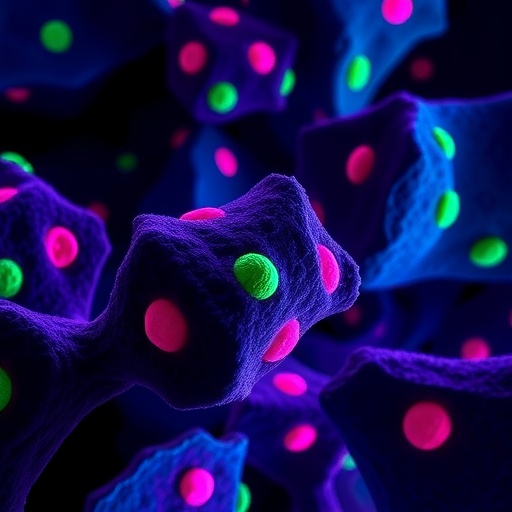In a groundbreaking study that delves deep into the environmental determinants of melanoma incidence, researchers at Penn State have uncovered a compelling association between agricultural practices and skin cancer rates in Pennsylvania. Focusing on an ecologic analysis spanning five years of cancer registry data, the team identified that adult residents over 50 in South Central Pennsylvania are disproportionately affected by melanoma in counties adjacent to or encompassing cultivated cropland. This revelation provides an urgent call to reconsider the environmental dimensions of melanoma beyond the traditional focus on ultraviolet radiation exposure.
The study meticulously adjusted for confounding variables such as ultraviolet (UV) radiation exposure—long established as a principal risk factor for melanoma—and socioeconomic status, yet the data revealed two striking patterns. First, melanoma incidence increased in counties with higher proportions of cultivated land. Second, there was a parallel rise in melanoma cases in regions with intensive herbicide application. Specifically, each 10% expansion in agricultural land correlated with a 14% increase in melanoma incidence, whereas a 9% uptick in herbicide-treated acreage was associated with a 13% surge in melanoma rates. These findings suggest an environmental component of melanoma risk that transcends individual behaviors and well-known lifestyle factors.
The implications of this research are profound, considering the ubiquity of herbicides and pesticides in modern agriculture. These chemicals, engineered to modify biological systems in crops and pests, might inadvertently amplify melanoma risk through mechanisms such as increased photosensitivity or oxidative DNA damage. Laboratory studies have previously documented that many herbicides elevate reactivity to sunlight and impair immune function, opening potential pathways for carcinogenesis in human skin. However, the Penn State study is a rare and robust indication of these effects manifesting at the population level.
Importantly, the elevated risk is not confined to those directly handling agrochemicals. The research team emphasizes that herbicides and pesticides do not remain static within fields; they can disperse via aerial drift, contaminate household dust, and infiltrate local water supplies. Thus, entire communities residing near agricultural zones may encounter chronic, low-level exposure that contributes cumulatively to melanoma risk. This paradigm challenges the conventional occupational health frameworks that traditionally focus on direct agricultural workers, broadening the scope to community and environmental health.
The study’s geographic scope—covering both rural and metropolitan counties—disrupts the misconception that melanoma linked to agriculture is a rural or farmworker-exclusive phenomenon. Urban-adjacent populations may also be vulnerable, underscoring the subtle, pervasive nature of environmental exposures that extend beyond obvious outdoor activities or sunbathing habits. This widens the public health relevance substantially, indicating that environmental influences on melanoma are multilayered and complex.
At a mechanistic level, the potential contribution of herbicides to melanoma development involves a constellation of biological disruptions. These chemicals can induce oxidative stress by generating reactive oxygen species, leading to DNA strand breaks and mutations in skin cells. Additionally, some herbicides enhance photosensitivity, making skin cells more susceptible to UV-induced damage, thereby synergistically heightening cancer risk. Immunomodulatory effects, such as suppression of local skin immunity, might further impair the skin’s natural defenses against malignant transformation.
Penn State researchers are candid in acknowledging the limitations of ecological studies like theirs — while strong correlations exist, causality cannot be definitively established. Confounding factors such as genetic predispositions, individual sun exposure behaviors, and access to healthcare are variables that merit further exploration. Nevertheless, this research serves as a critical signal that spotlights an underinvestigated but potentially significant environmental determinant of melanoma.
Looking forward, the team has emphasized the importance of a multidisciplinary “One Health” approach to tackling this complex issue. This methodology integrates human medicine, environmental science, agricultural practices, and public policy, recognizing that human health is inextricably linked to ecosystem health. Effective mitigation strategies must involve coordinated efforts among dermatologists, farmers, environmental regulators, and community stakeholders to limit harmful exposures while sustaining agricultural productivity.
Research efforts are already underway to fine-tune understanding of exposure pathways, including air and water pollution assessments, detailed agricultural practice audits, and community health surveys. These investigations aim to identify critical control points where interventions could reduce risk, such as improved pesticide application methods, buffer zones between farmland and residences, and public education campaigns on protective behaviors.
The relevance of this study extends internationally. Similar epidemiological patterns tying agricultural herbicides and pesticides to melanoma incidence have been reported in countries with intensive farming practices, including Poland, Italy, and Utah in the United States. This suggests a broader, perhaps global, public health challenge that demands concerted research and policy attention to understand regional nuances and implement context-specific solutions.
In practical terms, individuals residing near cultivated agricultural areas are advised to adopt vigilant skin protection routines. Regular dermatological skin checks, consistent use of broad-spectrum sunscreens, and sun-protective clothing can help mitigate melanoma risk. Increased awareness about environmental exposures and advocating for safer agricultural practices can empower communities to reduce their health risks collectively.
This study signals a paradigm shift in melanoma research by compelling the scientific community to transcend the traditional focus on UV radiation alone. It stimulates urgent inquiry into how modern agricultural technologies might contribute to cancer risk, demanding innovative, cross-sectoral strategies to protect human health in an era of industrialized agriculture.
Subject of Research: People
Article Title: Harvesting Risk: An Ecologic Study of Agricultural Practices and Patterns and Melanoma Incidence in Pennsylvania
News Publication Date: 14-Nov-2025
Web References:
– Cancer registry data at Pennsylvania Department of Health: https://www.pa.gov/agencies/health/healthcare-and-public-health-professionals/cancer-registry
– Penn State skin cancer awareness page: https://pennstatehealthnews.org/2024/05/may-is-skin-cancer-awareness-month-protect-your-skin/
– Journal Article DOI: http://dx.doi.org/10.1200/CCI-25-00160
– Previous studies linking pesticides to melanoma: https://onlinelibrary.wiley.com/doi/10.1111/jdv.15964
References:
Penn State Cancer Institute research team, JCO Clinical Cancer Informatics, 2025.
Image Credits: Courtesy Eugene Lengerich
Keywords: Skin cancer, Melanoma, Agriculture, Herbicides, Pesticides, Environmental exposure, Public health, Epidemiology, One Health, Oxidative stress, Photosensitivity
Tags: adult skin cancer ratesagricultural land impact on healthagricultural practices skin cancercancer registry data analysisenvironmental determinants melanomaenvironmental health researchfarmland and health risksherbicide application melanoma riskmelanoma incidence Pennsylvaniaskin cancer clusterSouth Central Pennsylvania health studyUV radiation confounding factors





